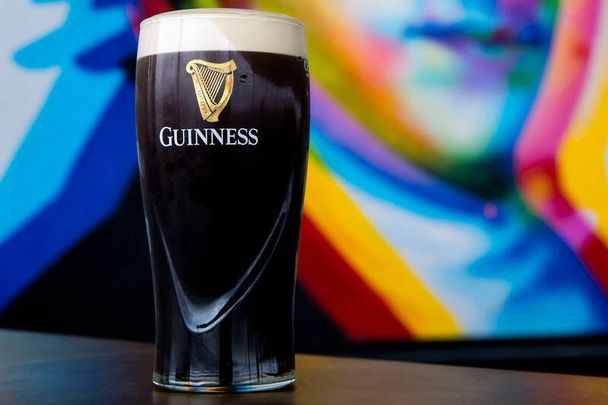Ever wondered why it takes the barman twice as long to come back with a pint of Guinness than say, a regular draft beer?
Part of the reason is nitrogen - the gas used to carbonate the beloved black stuff.
William Lee, a professor of Industrial Mathematics at the University of Huddersfield revealed that the specially-designed Guinness pint glass causes the bubbles to sink and therefore increases the wait time for the beer to settle.
In a 2018 study funded by the Science Foundation Ireland, Professor Lee also revealed that most people have been pouring Guinness all wrong.
Alas, it’s not their fault - it’s Guinness’ fault!
The scientist explained that when you order Guinness in the pub, you will probably notice that the bubbles are sinking. However, the law of physics outlines that bubbles should always rise.
“Is Guinness defying the laws of physics? Not exactly,” Professor Lee states.
“Every Guinness is supposed to be poured into a specially crafted tulip glass. But that glass is designed to manipulate the bubbles in the beer to turn the pour into a performance, making you wait longer than you need to,” he explains.
“Most beers are carbonated using carbon dioxide, but Guinness bubbles are filled with nitrogen. This is what gives the stout that iconic silky texture in your mouth and distinctive creamy head resting above the dark beer.
"When you look closely at a Guinness while it's settling, the bubbles are actually falling instead of rising.”
Lee and his team of scientists set about discovering why the bubbles sink, compared to beers that have bigger carbon-dioxide bubbles that will go up no matter what.
The group discovered that the sinking bubbles are more to do with the shape of the glass used. As the bubbles go up, they are moving away from the sloping walls and leaving behind the stout which is denser than the light bubbles.
“As it sinks it carries the bubbles with it. So that's why you see the sinking bubbles in Guinness with the small bubbles, which get carried down by the currents,” they explain.
The narrator of the video below also explains that the laborious pour process involved with executing the perfect pint has become as synonymous with the product as the alcoholic beverage itself.
“The pour is marketed by Guinness as a six-step process including a special pint glass, a correct angle of pouring, and even a midway waiting period in which the beer separates before the pint is topped off. It has become a time-honored ritual in pubs around the world. A bulk of that time is the settling. But this time period is as much about marketing as it is the physics. You may be waiting longer than you would for another beer, but that's by design.”
This gives a whole new meaning to the company’s iconic marketing tagline, "Good things come to those who wait."
Now, for the plot twist. Professor Lee argues that the ideal glass for a Guinness is actually a giant cocktail glass!
“Sloping walls going straight out, but basically gigantic and looking very strange,” he explains.
“So the ideal glass would be kind of martini-shaped.
"I'm hoping that somewhere in between the standard pint glass and the giant martini glass there's something where settling happens a bit quicker than it happens at the moment, but that doesn't look totally ridiculous, something that beer drinkers might actually use.”
*Originally published in May 2018. Updated in August 2023.




Comments